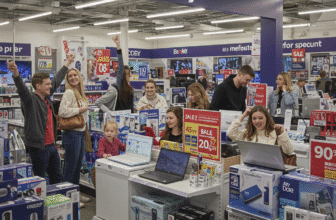
Your Ultimate Guide to Finding iPhones for Sale in the UK: Nailing the Perfect Deal in 2025
Thinking of getting your hands on an iPhone? You’re in good company. Apple’s iconic smartphone continues to be a top choice for millions across the UK, loved for its sleek design, powerful performance, and user-friendly ecosystem. But with a sea of options, from brand new models to pre-loved bargains, navigating the world of “iPhones for sale” can feel a bit overwhelming. Where do you start? How do you know you’re getting a good deal and not a dud? Fear not. This comprehensive guide is your one-stop shop for everything you need to know about buying an iPhone in the UK, whether you’re after the latest flagship or a budget-friendly gem.
New, Refurbished, or Second-Hand? Decoding Your Options
The very first decision to make is the condition of the phone you want. This choice will have the biggest impact on the price you pay and the peace of mind you get. Let’s break down the three main categories.
1. Brand Spanking New: The Premium Experience

There’s nothing quite like the feeling of unboxing a brand new iPhone. The pristine screen, the untouched accessories, and that signature new-tech smell. Buying new is the most straightforward, but also the most expensive, route.
- Where to Buy: The most obvious place is the Apple Store itself, either online or in-person. You’re guaranteed an authentic product with a full one-year warranty. Other major retailers like John Lewis (who often add their own two-year guarantee), Currys, and Argos are also excellent, reliable choices. Don’t forget the mobile network providers like EE, O2, Vodafone, and Three, who offer the latest iPhones on monthly contracts.
- Pros: Full manufacturer’s warranty, pristine condition, latest technology, often bundled with attractive contract deals from network providers.
- Cons: Highest price point. The value depreciates the moment you open the box.
2. Certified Refurbished: The Smart Shopper’s Secret
This is arguably the sweet spot for many buyers. A refurbished iPhone is a pre-owned device that has been returned, professionally inspected, repaired (if necessary), and certified to be in full working order. It’s the best of both worlds: a significant discount compared to new, with the security of a warranty.
- Where to Buy: Apple’s own Certified Refurbished store is the gold standard. These devices undergo a rigorous process, come with a brand new battery and outer shell, include all accessories, and are backed by the same one-year warranty as a new iPhone. Other fantastic options include reputable UK-based companies like musicMagpie, Back Market, and Giffgaff Phones. They grade their phones based on cosmetic condition (e.g., ‘Pristine’, ‘Very Good’, ‘Good’), so you know exactly what you’re getting.
- Pros: Substantial savings (often 15-30% off the new price), better for the environment, usually comes with a 12-month warranty, reliable and fully functional.
- Cons: May have minor cosmetic imperfections (unless you buy from Apple’s refurbished store), doesn’t come in the original retail box (usually a plain white one).
3. Second-Hand (Used): The Bargain Hunter’s Playground
Buying a used iPhone directly from a previous owner can land you the absolute best price. However, it also carries the highest risk. This is where you need to be savvy and do your homework.
- Where to Buy: Marketplaces like eBay, Gumtree, and Facebook Marketplace are flooded with listings. For more protection, consider platforms like CEX, which test their devices and offer a 24-month warranty, though their prices are often closer to refurbished models.
- Pros: The cheapest way to buy an iPhone. Potential for a fantastic bargain if you find a well-cared-for device.
- Cons: No warranty, higher risk of scams or undisclosed faults, battery health will be degraded, potential for it to be carrier-locked or even blacklisted.
Choosing the Right iPhone Model for You
With so many models available, which one should you choose? It’s easy to get drawn in by the latest and greatest, but you can save a fortune by picking a model that perfectly matches your needs.
The Flagship Contenders: iPhone 16 & iPhone 16 Pro (and recent predecessors)
If you must have the best camera, the fastest processor, and the most advanced features like the Dynamic Island, then the latest Pro models are for you. They are perfect for photographers, mobile gamers, and tech enthusiasts who demand peak performance. However, consider the previous year’s Pro model (e.g., an iPhone 15 Pro when the 16 is out). You’ll still get an incredibly powerful device, but at a significant discount as retailers clear stock.
The All-Rounders: The Standard iPhone 16 or iPhone 15
For most people, the standard, non-Pro model is more than enough phone. It offers a fantastic camera system, a powerful chip that will handle any app with ease, and a brilliant display. It strikes the perfect balance between high-end features and a more palatable price tag, making it an excellent choice for the majority of users.
The Budget Champion: The iPhone SE
Don’t overlook the iPhone SE. This model packs a modern, powerful processor into the classic, smaller body with a Touch ID home button. If you’re not fussed about having multiple camera lenses or an edge-to-edge display, the SE offers incredible value for money. It’s fast, reliable, and will receive iOS updates for years to come, making it a brilliant first iPhone or a fantastic choice for those who prefer a more compact device.
Top Tips for Nabbing the Best Deal
Finding an iPhone for sale is easy. Finding a *great deal* takes a little more strategy.
- Time Your Purchase: The best time to buy an iPhone is usually right after a new model is announced, typically in September. Retailers and networks will drop the prices of the previous generation to clear out old stock. Black Friday and Cyber Monday in November are also prime times for big discounts.
- Contract vs. SIM-Free: Buying a phone on a contract spreads the cost, which can be convenient. However, always calculate the total cost over the 24-month period. Often, buying the phone SIM-free (outright) and pairing it with a cheap SIM-only deal from a provider like Giffgaff, Voxi, or Smarty works out cheaper in the long run. Use a comparison site to do the maths.
- Trade in Your Old Phone: Don’t let your old phone gather dust in a drawer! Apple, mobile networks, and many third-party retailers offer trade-in programmes. This can knock a significant amount off the price of your new device. Get quotes from a few different places to see who offers the best value for your old model.
- Check Cashback Sites: Before you click ‘buy’, always check sites like TopCashback or Quidco. They often have cashback offers for major retailers and network providers, putting a little extra money back in your pocket for no extra effort.
Your Essential Checklist Before Buying a Used or Refurbished iPhone
If you’re venturing into the pre-owned market, a few crucial checks can save you from a world of hurt. Insist on being able to inspect the phone in person if buying from a private seller.
- Check the Battery Health: This is a big one. Go to Settings > Battery > Battery Health & Charging. You’ll see a ‘Maximum Capacity’ percentage. A brand new phone is at 100%. Anything above 85% is generally considered good, but if it’s below 80%, the battery is officially ‘degraded’ and you’ll likely need to factor in the cost of a replacement soon.
- Verify the IMEI Number: The IMEI is a unique 15-digit code for every phone. You can find it by dialling *#06# on the phone. Use a free online IMEI checker (like IMEI.info) to ensure the phone hasn’t been reported as lost or stolen (blacklisted). A blacklisted phone will not work with any UK SIM card.
- Physical Inspection: Look for deep scratches on the screen and camera lenses. Check for any signs of water damage (look inside the SIM tray for a red indicator). Test all the buttons (volume, power, silent switch) to ensure they click properly.
- Test the Core Functions: If you can, insert your own SIM card to make a test call and check for a mobile signal. Connect to Wi-Fi. Test the cameras (front and back), the speakers, and the microphone. Plug it in to ensure it’s charging correctly.
- Check for iCloud Lock: Make sure the previous owner has completely signed out of their Apple ID and turned off ‘Find My iPhone’. If they haven’t, the phone is an expensive paperweight. Go to Settings – if you see their name at the top, it’s still locked to their account. It should be clear and ready for you to sign in.
Final Thoughts: Your Perfect iPhone Awaits
Buying an iPhone in the UK doesn’t have to be a gamble. By understanding the difference between new, refurbished, and used, identifying the right model for your needs, and knowing what checks to perform, you can confidently find the perfect device for your budget. The refurbished market, in particular, offers phenomenal value and is an eco-conscious choice that’s hard to ignore. Whether you’re splashing out on the latest Pro model from the Apple Store or hunting for a pre-loved bargain on Back Market, do your research, be patient, and get ready to enjoy your new-to-you iPhone for years to come.







